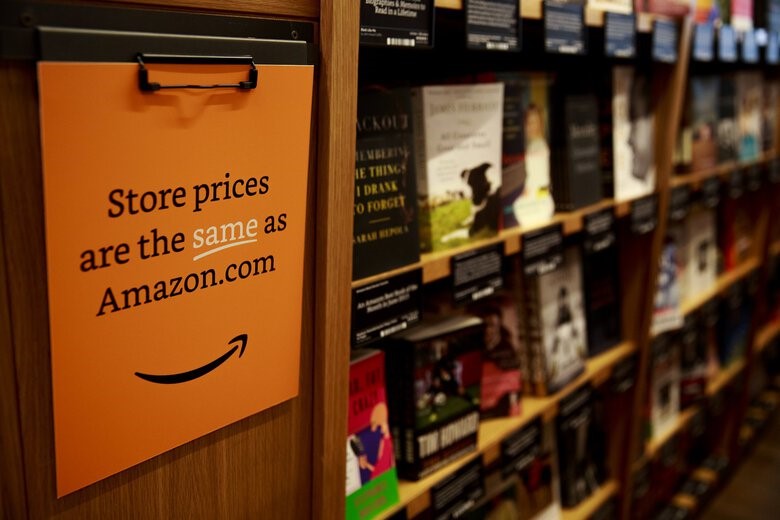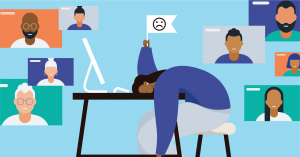By Mimi Perka
Maybe you’ve used it to learn a new dance move, watch a funny video, interact with friends, or perhaps you have even tried your own luck on the app in pursuit of fame and fortune.
The social media app, TikTok, became sensationalized during the height of the COVID-19 pandemic, due to the free-for-all[1] nature of the app and the app’s incredible Artificial Intelligence (AI) technology that makes the content on the app customized and addictive for any user.[2]
Among the many genres of video on the app, many content creators have gained a following by sharing internet “dupes” of luxury products.[3] The term “dupe” has become popularized by internet beauty and fashion influencers, and it has come to colloquially signify that a product is a cheaper alternative to a well-known higher-end product.[4]
As sensational and entertaining as these dupe TikTok videos are, and as much as consumers are spending more time on the internet shopping looking for deals,[5] could these internet stars be inadvertently causing legal trouble between these imitation producers and the higher-end businesses who make the ‘real thing’? Or worse, could these viral stars be promoting dangerous products and brands to their followers?
Although it isn’t illegal for these stars to be purchasing dupes,[6] trademark law protects brands from unfair methods of competition, which includes protection against brand dilution, blurring, and tarnishing.[7] Trademark law has focused this protection on identifying the general “likelihood of confusion” between one product’s source-identifying aspects (terms, images, and product designs) and another competing product’s use of the same aspects.[8]
Among the many dupes trending on TikTok, users have been comparing: Maison Francis Kurkdjian’s iconic $325 Baccarat Rouge 540 Eau de Parfum to Ariana Grande’s sweet-but-refreshing $40 Cloud Perfume; Maybelline’s Cheek Heat Blush in comparison to Glossier’s pricier Cloud Paint;[9] and The Sol de Janeiro’s $45 Brazilian Bum Bum Cream to Trader Joe’s $5.99 Brazil Nut Body Butter.[10]
To acquire trademark protection, marks must achieve the status of distinctiveness.[11] Marks are also considered distinctive if they are able to acquire secondary meaning among consumers, which means that consumers would perceive the mark as an indication of the source, or brand.[12]
When determining direct trademark infringement, courts have generally analyzed the likelihood of confusion between brands based on a multifactor test.[13] Factors relevant to likelihood of confusion include:
- Strength of the mark;
- Proximity of the goods;
- Similarity of the marks;
- Evidence of actual confusion;
- Marketing channels used;
- Types of goods and the degree of care likely to be exercised by the purchasers;
- Defendant’s intent in selecting the mark; and
- Likelihood of expansion of the product lines.[14]
When TikTok stars post these “dupe review” videos, they are generally choosing a mark that they recognize as having achieved a distinctive status and comparing it to another product that they believe others will recognize as achieving the exact same distinctive mark for a fraction of the cost. While a seemingly playful and lighthearted way for these stars to help their followers save money, trademark infringement is not a victimless crime.[15]
While trademark law facially seeks to protect hardworking and good faithed brands, trademark law also plays an important role in protecting consumers from potentially dangerous products, protecting the economy from sales declines due to fear of counterfeits, protecting the public from resale market deception, and protecting the value of consumer’s products from market dilution.[16]
Although it is always satisfying to find the next best deal while online shopping, and while Katy Perry might be in her own hot water for knocking-off Maison Francis Kurkdjian’s fragrance, it is important for social media stars to realize the ripple effect the promotion of these replica products could lead to – so TikTok users, “Y U Gotta Be Like That”?[17]
Image source: https://www.nytimes.com/2019/03/10/style/what-is-tik-tok.html
[1] John Herrman, How TikTok Is Rewriting the World, N.Y. Times (Mar. 10, 2019), https://www.nytimes.com/2019/03/10/style/what-is-tik-tok.html.
[2] Jason Davis, The TikTok Strategy: Using AI Platforms to Take Over the World, INSEAD Knowledge (June 19, 2019), https://www.insead.edu/sites/default/files/assets/faculty-personal-site/jason-davis/documents/TikTok.pdf.
[3] Megan Graham, TikTok teens are obsessed with fake luxury products, CNBC (Mar. 1, 2010), https://www.cnbc.com/2020/02/29/tiktok-teens-are-obsessed-with-fake-luxury-products.html.
[4] Knobbe Martens, Dupe Cosmetics Prove Big Business, But Not Without Legal Complications, The Fashion Lawyer (May 17, 2017), https://www.thefashionlaw.com/dupe-cosmetics-prove-big-business-legally-problematic/.
[5] Ms. Suzanne Malhotra, Empirical Scale for Revenge Buying Behaviour: A Curious Consequence of Pandemic, BIMTECH (2021), https://www.bimtech.ac.in/Uploads/image/1716imguf_BSP_SuzaneeMalhotra-Revised.pdf.
[6] Erin Fitzgerald, The Fashion Police: Criminalizing the Knowing Purchase of Trademark Counterfeit Fashion Items, 47 NEW ENG. L. REV. 127, 129 (2012).
[7] The Lanham Act, 15 U.S.C. §§ 1051–1127.
[8] Peter S. Menell et al., Intellectual Property in the New Technological Age: 2021, 510, 1042 (2021).
[9] Camila Barbeito, The Affordable Fashion Dupes Trending On TikTok, The List (Aug. 1, 2021), https://www.thelist.com/475740/the-affordable-fashion-dupes-trending-on-tiktok/.
[10] Karishma Desai, The $6 Dupe To Sol De Janeiro’s Bum Bum Cream You Have To Try, The List (July 29, 2021), https://www.thelist.com/473460/the-6-dupe-to-sol-de-janeiros-bum-bum-cream-you-have-to-try/.
[11] Menell et al., supra note 8, at 936.
[12] Id. at 940.
[13] It is important to note that tests can vary per jurisdiction, however these factors have generally applied.
[14] AMF Inc. v. Sleekcraft Boats, 599 F.2d 341, 348–349 (9th Cir. 1979), abrogated on other grounds by Mattel, Inc. v. Walking Mountain Prods., 353 F.3d 792, (9th Cir. 2003).
[15] G. Trenton Hooper & Janna M. Wittenberg, Counterfeiting and the Myth of the Victimless Crime, 4 Landslide 41, 41 (2011).
[16] Id. at 43.
[17] Audrey Mika, Y U Gotta Be Like That (RCA Records 2020).
















